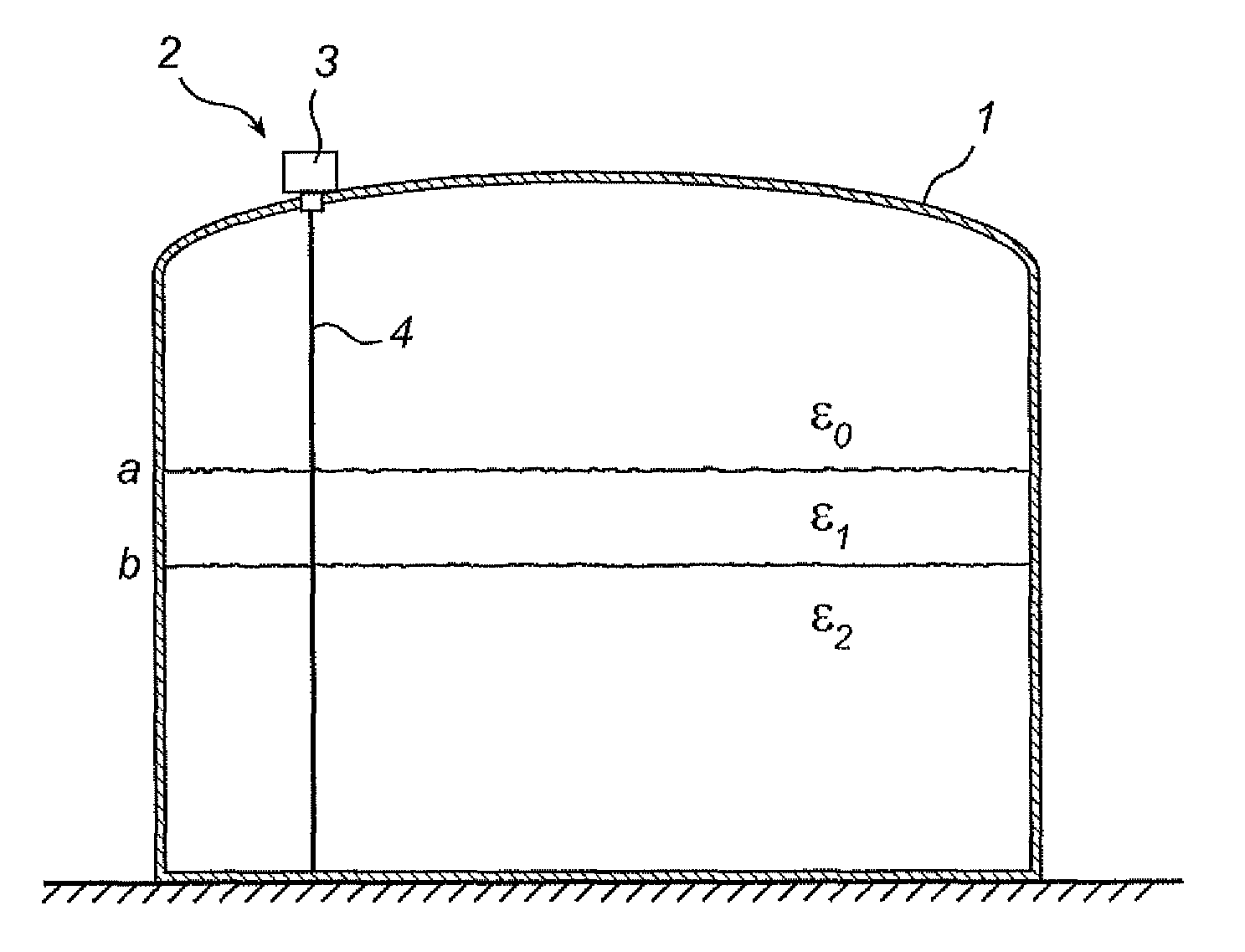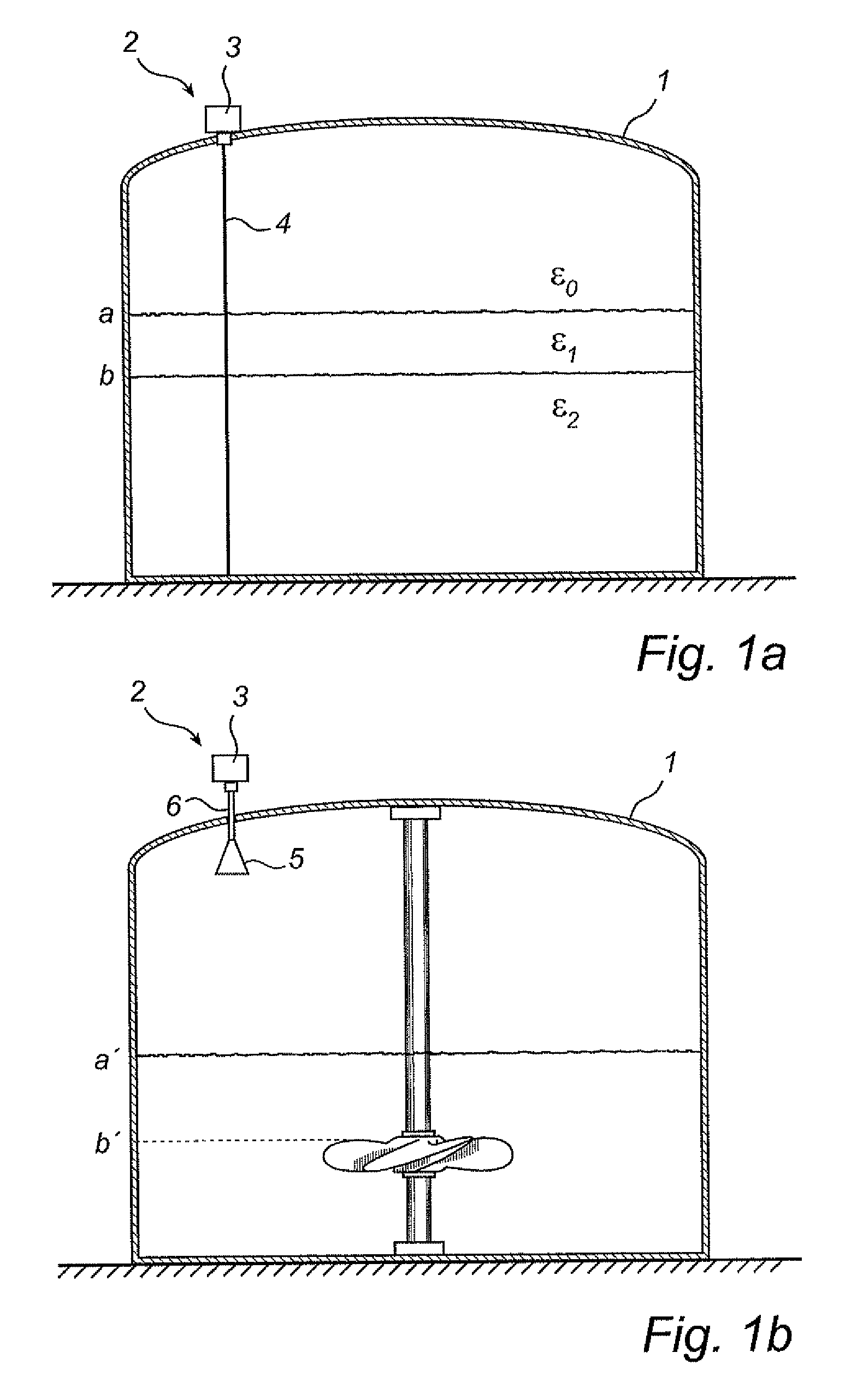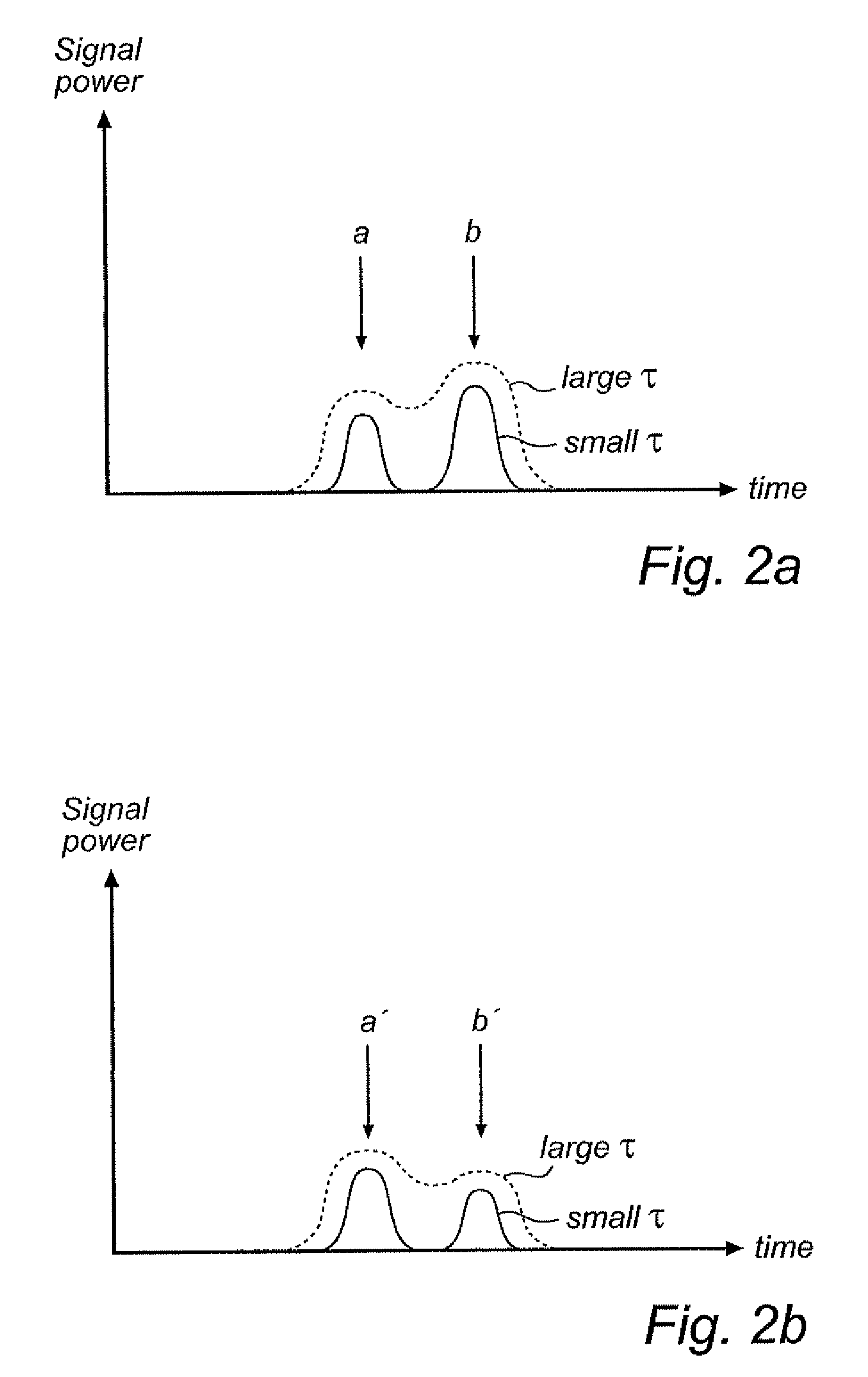Radar level gauge with variable pulse parameters
a pulse parameter and radar technology, applied in the direction of engine lubrication, liquid/fluent solid measurement, reradiation, etc., can solve the problem that pulse radars typically have lower sensitivity than frequency modulated continuous wave radars, and achieve optimized pulse width selection, optimized balance, and optimized map resolution and sensitivity.
- Summary
- Abstract
- Description
- Claims
- Application Information
AI Technical Summary
Benefits of technology
Problems solved by technology
Method used
Image
Examples
Embodiment Construction
[0036]FIGS. 1a and 1b show schematically a radar level gauge (RLG) system 2 according to the present invention. As is discussed in more detail in the following, the radar level gauge system comprises an electronic unit 3 for transmitting and receiving radar signals and processing the received signals in order to determine the level of a filling material in the tank 1. Specifically, the system 2 is arranged to perform measurements of one or several level of a filling material, such as the level of an interface between two (or more) materials in the tank. Typically, the first material is a content stored in the tank, e.g. a liquid such as gasoline, while the second material is air or some other atmosphere. In that case, the RLG will enable detection of the level of the surface of the content in the tank. Notably, different tank content have different impedance, and the electromagnetic waves will not propagate through any material in the tank. Typically, therefore, only the level of a ...
PUM
 Login to View More
Login to View More Abstract
Description
Claims
Application Information
 Login to View More
Login to View More - R&D
- Intellectual Property
- Life Sciences
- Materials
- Tech Scout
- Unparalleled Data Quality
- Higher Quality Content
- 60% Fewer Hallucinations
Browse by: Latest US Patents, China's latest patents, Technical Efficacy Thesaurus, Application Domain, Technology Topic, Popular Technical Reports.
© 2025 PatSnap. All rights reserved.Legal|Privacy policy|Modern Slavery Act Transparency Statement|Sitemap|About US| Contact US: help@patsnap.com



